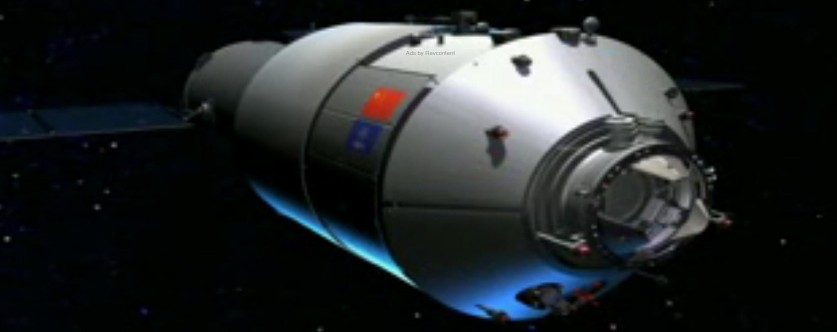China’s Heavenly Palace to fall to Earth late 2017

After about six years in space, China's first prototype space station — Tiangong-1 — is expected to fall into the Earth's atmosphere in the latter half of 2017, Chinese officials said at a press conference last week.
Tiangong-1 (Chinese for "Heavenly Palace 1") was launched on September 29, 2011, and served as both a manned laboratory and an experimental testbed to demonstrate orbital rendezvous and docking capabilities. On March 21, 2016, after more than 2 years of extended lifespan, China's officials announced that Tiangong-1 had officially ended its service.
"The space lab is currently intact and orbiting at an average height of 370 km (230 miles)," said Wu Ping, deputy director of the manned Space Engineering Office.
"It was in service for four and a half years, two and a half years longer than its designed life, and had docked with Shenzhou-8, Shenzhou-9, and Shenzhou-10 spacecraft and undertaken a series of tasks, making important contributions to China's manned space cause," Wu said.
"Based on our calculation and analysis, most parts of the space lab will burn up during falling. It is unlikely to affect aviation activities or cause damage to the ground."
"China has always highly valued the management of space debris, conducting research and tests on space debris mitigation and cleaning. We will continue to monitor Tiangong-1 and strengthen early warning for possible collision with objects. If necessary, China will release a forecast of its falling and report it internationally."
Tiangong-1 was not designed nor planned to be a permanent orbital station. It was a testbed for key technologies that will be used in China's large modular space station, expected to be launched around 2020.
On Thursday, September 15, 2016, China has launched Tiangong-2, thus making another significant step toward building their large manned space station.
"The launch of Tiangong-2 demonstrates China remains committed to human spaceflight and to the goal of building a space station in low earth orbit," Gregory Kulacki, senior analyst and China project manager at the U.S.-based Union of Concerned Scientists' Global Security Program, told Xinhua.
"I anticipate that Tiangong-2 will test more advanced life support systems, as well as cargo ship docking and station refueling. This will set the stage for the launch of China's core space station module in 2018," said former NASA astronaut Leroy Chiao, the first Chinese-American to be commander of the International Space Station.
Featured image: Tiangong-1. Credit: CNSA

Commenting rules and guidelines
We value the thoughts and opinions of our readers and welcome healthy discussions on our website. In order to maintain a respectful and positive community, we ask that all commenters follow these rules.